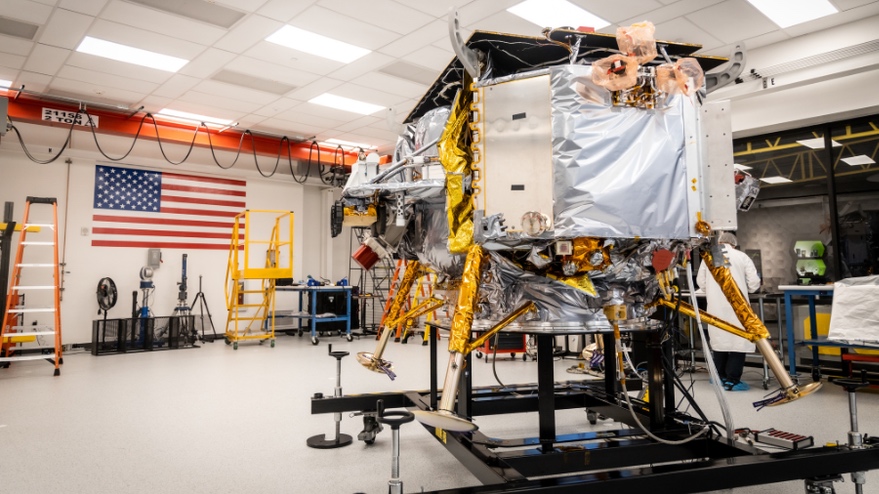WASHINGTON — NASA and Astrobotic have changed the landing site for the company’s first lunar lander mission shortly before its scheduled launch, moving the mission to a location of greater scientific interest.
NASA announced Feb. 2 the Astrobotic’s Peregrine mission, flying payloads for the agency’s Commercial Lunar Payload Services (CLPS) program and other customers, will now attempt a landing near a region called the Gruithuisen Domes on the northeast edge of Oceanus Procellarum, or Ocean of Storms, on the western part of the moon’s near side.
Astrobotic had originally targeted a region called Lacus Mortis, a basaltic plain on the northeastern side of the near side of the moon, based on the projected performance of the lander and a desire for a relatively safe landing area. That was the landing location identified when NASA awarded one of the first CLPS task orders to Astrobotic for the mission in May 2019.
“However, as NASA’s Artemis activities mature, it became evident the agency could increase the scientific value of the NASA payloads if they were delivered to a different location,” the agency said in a statement announcing the landing site change. NASA is planning to send an instrument suite called Lunar-VISE to the Gruithuisen Domes on a future CLPS mission to study that region to understand why they appear to be rich in silica.
Sending Peregrine to a region near the Gruithuisen Domes, NASA stated, “will present complementary and meaningful data to Lunar-VISE without introducing additional risk to the lander.”
There had been signs that NASA was planning a change in Peregrine’s landing site. In a presentation to NASA’s Planetary Science Advisory Committee Dec. 6, Joel Kearns, NASA deputy associate administrator for exploration in NASA’s Science Mission Directorate, showed a map of CLPS landing locations that showed Peregrine landing near Gruithuisen Domes.
The announcement did not provide an update on the anticipated launch date of Peregrine on the inaugural flight of United Launch Alliance’s Vulcan Centaur rocket. Astrobotic said Jan. 25 it had completed testing of the lander and was awaiting the “green light” from ULA to ship the spacecraft to Cape Canaveral for pre-launch processing. The rocket itself arrived at Cape Canaveral last month and ULA is preparing it for tests leading up to the launch.
